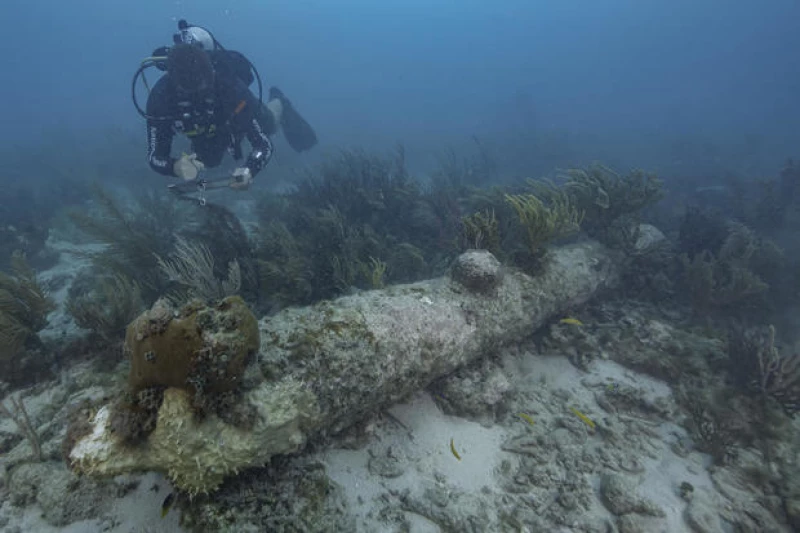Centuries have passed since a British warship met its tragic fate off the coast of Florida. The HMS Tyger, a 50-gun frigate, sank in the waters of what is now Dry Tortugas National Park, taking with it hundreds of sailors. The surviving crew members found themselves stranded on an uninhabited island for over two months before embarking on a daring escape using makeshift boats.
Although the shipwreck was first discovered in 1993 near Key West, recent research by archaeologists has definitively confirmed that the wreck is indeed the HMS Tyger, as announced by the National Park Service. The vessel met its demise on Jan. 13, 1742, after running aground on the reefs of the Dry Tortugas during the Anglo-Spanish War, a conflict between Britain and Spain that lasted nine years. Historical logbooks recount how the crew attempted to save the ship by lightening its load before it ultimately sank beneath the waves.

Back in 2021, during a survey of the area, archeologists stumbled upon a collection of five cannons near the main wreck site. These cannons, ranging from 6 to 9 pounds, were confirmed to have been discarded overboard when the warship initially hit the ground. This discovery led experts to conclude that the wreck initially discovered in 1993 was, in fact, the HMS Tyger.
"Archeological discoveries are always thrilling, but when we can link them to historical events, it helps us piece together the narratives of those who came before us and the trials they faced," stated Park Manager James Crutchfield. "This particular tale speaks of resilience and survival. National parks play a crucial role in safeguarding these hidden stories as they unfold."
Reports from park officials indicate that around 300 crew members were aboard the HMS Tyger when it met its fate, and the survivors endured 66 days stranded on an island that is now known as Garden Key.
"The marooned survivors faced sweltering heat, relentless mosquitoes, and parching thirst as they sought a way off the deserted island," mentioned the park service.
To prevent the ship's weaponry from falling into enemy hands, the crew set fire to the remains of the warship. Subsequently, they constructed makeshift boats using salvaged parts from the HMS Tyger and embarked on a daring 700-mile journey through hostile waters, eventually reaching Jamaica after 55 days.
The HMS Tyger was the first of three British warships to sink off the coast of the Florida Keys, as stated by the park service. Previous expeditions had identified the wreck sites of HMS Fowey and HMS Looe.
"The significance of preserving historical sites in their original locations cannot be overstated, especially as future generations of archaeologists equipped with advanced technologies continue to uncover new discoveries," stated Josh Marano, the lead maritime archaeologist who spearheaded the team responsible for identifying the HMS Tyger.
While the site is already safeguarded by cultural heritage laws within Dry Tortugas National Park, the confirmed identification of the HMS Tyger now provides additional protection under the Sunken Military Craft Act of 2004, as per officials. It is emphasized that the remnants of the HMS Tyger and its associated artifacts are the rightful property of the British government.
The comprehensive findings of the archaeologists have been recently documented in the International Journal of Nautical Archaeology.






